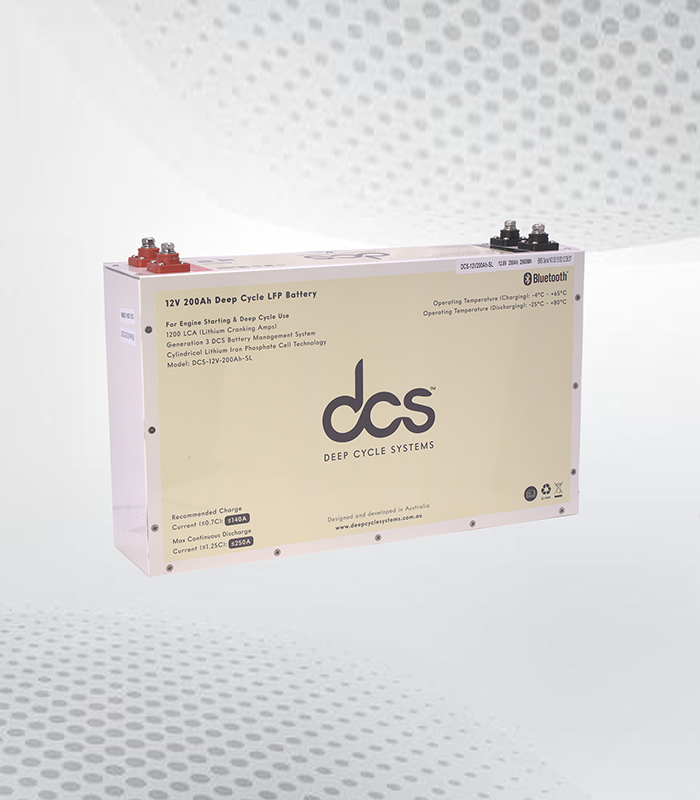Hybrid solar energy is a renewable and sustainable source of power that has gained significant popularity in recent years. As the world transitions towards cleaner and more efficient energy solutions, the importance of solar energy cannot be overstated. Solar panels convert sunlight directly into electricity, reducing our dependence on fossil fuels and lowering greenhouse gas emissions. Additionally, advances in technology have made solar energy more affordable and accessible for both residential and commercial use.
Environmental Benefits of Using Solar Energy
Solar energy, a beacon of hope for environmental sustainability, offers numerous benefits that contribute to a healthier planet. Harnessing the sun’s power impacts the environment positively in several ways, significantly reducing the carbon footprint associated with traditional energy sources.
Reduction of Greenhouse Gas Emissions
Solar energy systems produce electricity without emitting carbon dioxide (CO2) or other greenhouse gases into the atmosphere. By transitioning to solar power, we can significantly reduce the amount of CO2 and other harmful pollutants released, combat climate change, and contribute to cleaner air and a healthier environment.
Minimal Water Usage
Unlike fossil fuel and nuclear power plants, which require vast amounts of water for cooling, solar energy systems use negligible water, making them ideal in water-scarce regions. This greatly reduces the strain on local water resources and helps preserve precious water supplies for other essential uses.
Decreased Dependence on Fossil Fuels
Adopting solar energy decreases our dependence on finite and polluting fossil fuels. This shift helps reduce global carbon emissions and mitigates the environmental damage caused by oil spills and mining and extraction processes associated with fossil fuel production.
Economic Advantages of Hybrid Solar Power
Adopting hybrid solar power brings a host of economic benefits that are reshaping the energy landscape. This innovative approach to power generation is not just about harnessing the sun’s energy; it’s also about tapping into the financial savings and growth opportunities it presents. Once considered prohibitive, the initial investment in solar technology has seen a dramatic decrease over the years, making solar energy more accessible to a broader range of consumers and businesses. This decline in cost, coupled with the rising efficiency of solar panels, means that the return on investment is now more attractive than ever.
Beyond the immediate savings on electricity bills, solar power systems contribute to a more resilient and diversified energy sector. This diversification reduces the risk associated with reliance on a single energy source and can lead to more stable energy costs in the long term. Moreover, the solar industry’s growth stimulates local economies by creating jobs in installation, maintenance, and manufacturing. The solar sector has become a significant employment driver, outpacing many traditional industries.
Investing in solar power also unlocks potential revenue streams. For instance, surplus energy generated can often be sold back to the grid, turning an energy system into a possible source of income. Additionally, businesses adopting solar technology can benefit from government incentives, tax credits, and grants designed to encourage the shift towards renewable energy.
Role of Solar Hybrid Power Systems
Solar hybrid power systems fuse solar energy with other forms of renewable resources, such as wind or hydroelectric power, to forge an efficient and reliable energy solution. These systems exemplify the principle of diversification in energy production, ensuring a continuous power supply even in conditions where solar energy alone might falter. Integrating multiple energy sources mitigates the variability inherent in solar power, addressing one of the primary challenges of relying solely on the sun’s rays for electricity.
Such hybrid systems are pivotal in enhancing the energy grid’s resilience. They allow smoother transitions between different power sources without significant energy loss, ensuring the supply remains steady and reliable across varying weather conditions and times of the day. This adaptability makes hybrid systems particularly valuable in regions with unpredictable weather patterns or where the sun’s availability is seasonally constrained.
Moreover, solar hybrid systems introduce an element of energy sovereignty, diminishing dependency on traditional power grids and fossil fuels. They empower communities and individuals by providing the tools to produce their electricity, thus fostering self-sufficiency and resilience against external shocks to the energy system.
Hybrid Solar Power System for Energy Independence
A hybrid solar power system marks a significant stride toward achieving energy independence, an essential component for individuals and communities seeking autonomy over their energy resources. This innovative approach leverages the strengths of solar energy in combination with other renewable sources, such as wind or biomass, to generate a stable and consistent power supply. The essence of such systems lies in their ability to operate independently of the traditional power grid, offering a sustainable solution to those in remote or underserved areas where access to centralized energy is limited or nonexistent.
The beauty of a hybrid system is its versatility. During abundant sunlight, the system maximizes solar energy usage, reducing reliance on other energy sources or the grid. Conversely, when there is insufficient solar power, it seamlessly integrates alternative renewable sources to maintain a continuous energy supply. This flexibility ensures that energy production aligns with consumption patterns, enhancing efficiency and reducing waste.
Adopting a solar power system directly impacts energy security for households and businesses. Not only does it shield them from the unpredictability of grid-supplied electricity and fluctuating energy prices, but it also provides a sense of empowerment through control over their energy destiny. This autonomy is about having an uninterrupted power supply and contributing to a greener planet by reducing dependency on fossil fuels and lowering carbon emissions.
Importance of Hybrid Solar Power Systems
Hybrid solar power systems represent a critical advancement in the quest for renewable energy solutions, merging solar energy capabilities with other renewable sources to form a robust and versatile energy framework. This fusion enhances the reliability of energy supply and elevates the overall efficiency of power generation, catering to the needs of diverse environments and usage patterns.
By integrating technologies such as wind, biomass, or hydroelectric power with solar panels, these systems ensure a continuous power flow, even in periods of low sunlight, thus addressing one of the key limitations of standalone solar power setups. The strategic importance of these hybrid systems lies in their capacity to balance energy production, utilizing the most abundant resource available at any given time.
This adaptability maximizes the utility of renewable resources and significantly diminishes reliance on traditional energy grids and fossil fuels, paving the way for a greener and more sustainable energy future. The inherent flexibility of solar power systems makes them particularly suitable for remote and rural areas, where grid connectivity may be limited or nonexistent, thereby extending the reach of clean energy solutions to underserved populations.
Solar Energy and Its Role in Sustainable Development Goals
Harnessing solar energy plays a pivotal role in propelling the world toward the fulfilment of the United Nations Sustainable Development Goals (SDGs), particularly those focused on affordable and clean energy (Goal 7), climate action (Goal 13), and economic growth (Goal 8). By transitioning to solar power, communities worldwide can elevate their energy security, mitigate climate change, and foster inclusive economic development.
Solar power stands at the forefront of renewable energy solutions, offering a path to reduce global greenhouse gas emissions and combat climate change effectively, aligning with SDG 13. Its deployment across urban and rural landscapes contributes to decreased air pollution and promotes a healthier environment, enhancing the quality of life for all.
Moreover, the scalability of solar energy systems—from rooftop installations to vast solar farms—makes them an invaluable asset in achieving SDG 7. Solar technology provides a reliable source of clean energy, bridging the gap for nearly 789 million people worldwide without access to electricity. By democratizing energy access, solar power paves the way for educational, health, and technological advancements in the most underserved regions, directly contributing to SDG 8 by driving economic growth and job creation in the green energy sector.
The Future of Solar Energy: Trends and Predictions
Advancements in Solar Panel Efficiency
Future trends in solar energy point towards significant improvements in solar panel technology. Scientists and engineers are continuously working on increasing the efficiency of solar panels, aiming to convert more sunlight into electricity. Innovations such as perovskite solar cells and bifacial panels, which capture sunlight from both sides, are expected to revolutionize solar energy generation by making it even more efficient and cost-effective.
Expansion of Solar Storage Solutions
As solar energy becomes a more integral part of the global energy mix, the development of advanced solar storage solutions is gaining momentum. The future will see the proliferation of high-capacity batteries and other storage technologies that enable households and businesses to store excess solar power during low sunlight or peak demand. This evolution is critical for overcoming one of solar energy’s primary challenges: intermittency.
Integration with Smart Grids
Integrating solar energy systems with smart grids is a trend set to reshape the energy sector. Smart grids, enhanced with AI and machine learning capabilities, will optimize the distribution and consumption of solar energy, ensuring maximum efficiency. This seamless integration will facilitate a smoother transition towards renewable energy sources, empowering consumers to participate actively in energy management.
Why Opt for the Hybrid Solar Power Plant
Opting for a hybrid solar power plant is a strategic decision that capitalizes on the strengths of multiple renewable energy sources, ensuring a constant and diversified energy supply. This approach significantly enhances the reliability of the energy system, overcoming the limitations of weather-dependent sources like solar alone. Hybrid systems seamlessly integrate solar power with other renewables, such as wind or hydroelectric power, thus providing energy even when the sun isn’t shining. It not only maximizes the efficiency of energy production but also stabilizes energy availability, making it a versatile solution for various geographical and climatic conditions.
Additionally, these plants contribute to reducing energy wastage and increasing the potential for energy savings, aligning with both financial and environmental goals. Their ability to provide consistent power addresses critical energy needs while supporting the transition towards a more sustainable and resilient energy infrastructure. By choosing solar power plants, stakeholders can leverage the full spectrum of renewable resources, paving the way for a sustainable, independent, and efficient energy future.
Conclusion
Embracing hybrid solar energy marks a pivotal shift towards a sustainable energy paradigm, underscoring its fundamental role in addressing current environmental challenges and economic opportunities. The compelling journey through the numerous advantages of solar power, from its ecological friendliness to financial viability and beyond, underscores its potential to revolutionize our energy consumption patterns. Hybrid power systems, in particular, embody the innovative spirit of this era, blending the strengths of various renewable resources to offer unmatched reliability and efficiency.
FAQS
Q: How Does Hybrid Solar Energy Capture And Convert Sunlight Into Electricity?
A: Solar panels have photovoltaic (PV) cells that absorb sunlight. These cells create an electric field that converts sunlight into electrical energy, which is then used to power homes, businesses, and various devices.
Q: What Makes Solar Energy A Preferred Option For Environmental Conservation?
A: Solar energy significantly reduces greenhouse gas emissions and reliance on fossil fuels, leading to cleaner air and reduced pollution. Compared to conventional energy sources, it also uses minimal water, making it a sustainable and eco-friendly option.
Q: Can Solar Energy Contribute To Economic Growth?
A: Absolutely. The solar industry creates numerous manufacturing, installation, and maintenance job opportunities. It also offers potential savings on electricity bills and can generate income through surplus energy production, further stimulating economic activity.


